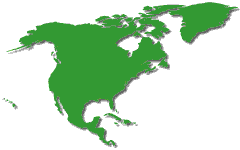 |
 |
 |
 |
| Montreal, September 1, 2001 / No 87 |
|
by
Harry Valentine
Canada has more fresh water that practically any other nation on the face of the earth. Yet, Canada is in the midst of a summer drought. Parched brown fields are reported from coast to coast. Agricultural crops face devastation if the rains don't come soon. Yet 2001 is not the first summer during which Canadians faced water shortages. It has been an ongoing event, occurring almost annually. |
| No
shortage of state control
While several of Canada's smaller rivers and streams have nearly dried up, the Great Lakes still have water, as so most of Canada's other large lakes. Water still flows in the major rivers, even though the water levels may be down a few inches. Lake Superior, which is almost 800-feet deep, is 2-feet lower than usual, which is the case for some of the other Great Lakes. However, water is not getting to the people who need it. The scenario is not unlike the shortages of consumer goods in the old Soviet Union, courtesy of state control. Like control over consumer goods in the old Soviet Union, water in Canada is subject to strict state control, even though some token water privatization has occurred in a few Canadian locations. Several Canadian waterways, including a few streams, are subject to some form of state control, often in the form of a conservation authority. The mandate of such authorities invariably is to protect wildlife and ecosystems. No new development goes ahead without approval from a conservation authority, or rather, no development goes ahead if wildlife habitat is threatened or will be disrupted. The reach of conservation authorities goes beyond rivers. Wildlife officials have the authority in certain parts of Canada to force their way into private homes without need of a search warrant, to inspect the contents of freezers and refrigerators. This is to ensure the population of deer, moose and various other types of game, waterfowl or fish. People in rural areas may not dig ditches or trenches on their property, even if the ditch or trench is intended as an irrigation canal or reservoir to store scarce water during a dry season. So laying a private pipeline for the purpose of transferring large volumes of water cannot be done without endless bureaucratic and governmental hassles, including a long list of regulatory requirements which bureaucrats will think up on the spur of the moment.
Several Canadian cities, villages and towns have called on their citizens to conserve water, due to looming water shortages. In Canada's capital city, Ottawa, such a call went out since the Ottawa River is a few inches below normal levels. However, a navigation canal called the Rideau Canal connects Ottawa to Lake Ontario, which is presently one-tenth of one percent below its normal depth for this time of year, that is, 2-feet in a 250-ft deep lake. A few high volume pumps at some of the locks along the Rideau Canal could supplement Ottawa's water supply. However, the bureaucratic red tape which prevents this is monumental. As most free market supporters are well aware, government control of a resource often leads to mis-allocation and waste of the resource. The Seaway system, which enables ships up to 600-feet long to travel between the Atlantic coast to inland ports, was only recently privatised. It has yet to be modified, since it wastes tremendous volumes of water to move ships through locks. The European barge canal system uses the energy from outflowing water to drive pumps to pump water in locks upstream, thus saving 2/3 the volume of water per lock. Every movement of a ship through one lock on the Seaway releases a volume of water a population of 15,000 people would use in a day. Some modern post-statist technology in the Seaway locks could make water available to 10,000 people every day, each time a ship went through a single lock on the stretch between Detroit and Montreal. However, Canadian federal and provincial officials would still stand in the way if private water pipelines, or even tanker trucks or trains, attempted to move water to areas where it would be most urgently needed. |
| << retour au sommaire |
|